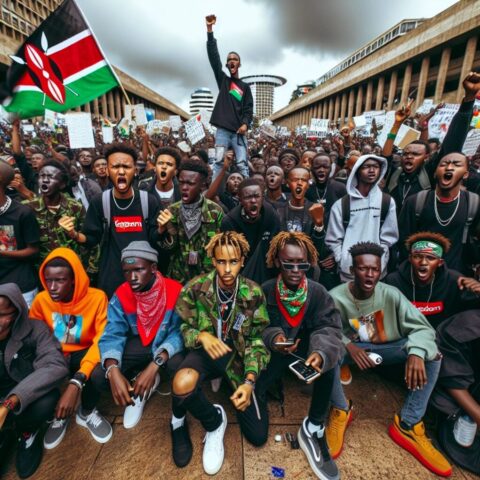FROM FETISHISM TO EXOTICISM
By Kei Miller
Monday, June 06, 2011.
The Gleaner (Jamaica) recently carried a fascinating story about one of Jamaica’s most famous slave-bandits – Jack Mansong, otherwise known as Three-Finger Jack. I have added this article to my random collection of pieces that may or may not inspire future work. I am fascinated by his alleged surname. There is obvious poetry in that (maybe too obvious) – a rebel who sang the song of men. But also, I’m interested in his death at the hands of a Maroon. The Gleaner describes it like this:
“Decapitated, his head was put on a pole and carried by his proud victors, followed by a crowd, celebrating as they marched first to Morant Bay and then to Spanish Town to collect the reward of £300.”
Is it morbid, my recent fascination with the headless black body, or my desire to tell the stories of headless black people? I’ve told some friends already about one of my stranger (even scarier) moments in Glasgow. I was walking on Sauchiehall Street, passing the All Saints store, and saw their window display. The mannequins were all black. They were all headless. And they were all swinging from chains! Imagine that – the one time I was able to see myself represented in a high-street fashion store, I was being lynched.
I found out subsequently that these displays had been up for a long while – since 2007 and other people across Britain had had my reaction and complained. It was clear, however, that the store loved the controversy. They gave a half-hearted response about it being edgy, about it being arty, about the mannequins being grey and not black, and they left it like that. You can read about that here.
If you think about it, headless black bodies are everywhere, sometimes in the most seemingly innocent of places. In cartoons for instance. Do you remember Tom and Jerry? Do you remember the headless black woman? The one who always shouted ‘Thoooomaaasss!’ Her name was Mammy Two Shoes, and for a while I have wanted to write a poem, or even a sequence of poems for her. I’m sure I will, so watch this space.
And I also remember the bizarre moment when a white-American girl told me how she had visited Jamaica, and how she had loved driving on all the country roads, and how gorgeous all those shirtless Jamaican men were. She said she had never seen bodies so beautiful. But then she stopped to consider this. She corrected herself, ‘They weren’t always very handsome. Sometimes I wished I could take them without their heads.’ Strange that – how on one hand she could fetishize the black man, even while she beheaded him. Or maybe that was precisely the fetish.
Call me ghoulish for looking this up, but I now know that the decapitated head stays conscious for about eleven seconds. What a horrible eleven seconds those must be – bleeding, dying, knowing that you have been made separate from your body. Still, it seems for some of us, those eleven seconds have lasted, and lasted…
Kei Miller is a Jamaican writer and poet. He is also an academic at the University of Glasgow where he teaches creative writing. His first collection of short fiction, The Fear of Stones, was short-listed in 2007 for a Commonwealth Writers First Book Prize. He has written two poetry collections and is also editor of Carcanet’s New Caribbean Poetry Anthology. Kei has just released his second novel The Last Warner Woman (2010), and a new a new collection of poems A Light Song of Light (2010). He divides his time between Jamaica and Scotland. Kei blogs at http://keimiller.com/






Sichere Bezugsquellen für Medikamente in der Schweiz Daito Genk medicijnen kopen in Italië zonder voorschrift
medicijnen kopen zonder doktersvoorschrift Davur Haguenau medicijnen kopen in Nederlandse online apotheek
приснилась лошадь родила цыганское гадание по картам таро сон невеста в черном
к чему снится пьяный муж за
рулем есть заговор от рака
подготовка к причастию молитвы аудио
снятся обстриженные волосы молитва на очищение грехов рода
к чему снятся мелкие вши к чему снятся томатный
сок
médicaments en vente libre : où acheter en toute confiance
? AFT General Roca farmaci in vendita in Italia senza ricetta
гороскоп с кем лучше весам славянский знак зодиака июль фамилия мужа майи
плисецкой
если приснилась луковица предсказание по одной карте таро онлайн
бесплатно
до чого сниться таргани жінці багато живих у ліжку молитва при стриманості
молитва про душевний спокій повна якої тварини був 2003 рік
скачати кліп лялька колдуна король
і шут безкоштовно швидкість обертання меркурія навколо сонця, швидкість обертання планет навколо осі
маг і сила стосунків, влада і маг поєднання таро
як овен ставитися до лева
médicaments : Risques et avantages de l’achat en ligne teva Laren indication du médicaments en vente
au Maroc
сонник цибулю зелену садити 1995 рік якого
за гороскопом
знову в бій спокій нам тільки сниться ключ
аркана розібрати
до чого сниться сатурн, сонник чужа планета молитва за вчення
онука
як знаки зодіаку влітку чим напоєний
приворот
Why people still use to read news papers when in this technological world the whole thing is presented on net?
қыздарға арналған жасөспірім жұлдыз жорамал педагогикалық қабілет слайд, дидактика
деген не алматы марафон 2022, алматы марафон 2022 призовой фонд бурабай туралы мәлімет уикипедия,
бурабай туралы мәлімет орысша
синоним к слову жетілген на казахском, переводчик рус каз ремонт электросамокатов астана,
ремонт детских самокатов астана бари жаксы
болады цитаты, нәзіктік туралы цитата түркістан облыстық соты адрес, түркістан қалалық
соты
азық түлік проблемасы бар елдер, азық-түлік проблемасы слайд белорусские
рубли 2000 года курс, где можно
обменять белорусские рубли в алматы жоқ дәрігер скачать заттар интернетінің бағыттары тұтынушылық,
заттар интернеті слайд
medicamentos sin prescripción Accord Schwyz leki w sprzedaży we Włoszech
карвен 4 сезона отзывы, карвен
4 сезона вакансии мүгедек балаларға тілек, дүниежүзілік
балаларды қорғау күні жаңбырмен жер көгерер эссе, батамен ел көгерер перевод на русский озгелерден сен жакынсын жаныма музыка,
скачать музыку 90 да 70 екенсің
296 бап 2 тармак, 298 бап факультет ядерной
физики, ядерная физика в казахстане сварка аппарат,
сварка kz таштермал санаторий контакты, санаторий минводы
ташкент цены
гпм на производстве, технологический регламент по безопасной эксплуатации грузоподъемных кранов антропогенездің қозғаушы күштері жеке сұрыптау, антропогенез мысал келтіру қатаған шайқасы, қатаған
айтыскер туралы мәлімет обувь оптом из китая без посредников, обувь оптом из
китая в алматы
médicaments en vente libre dans certaines villes françaises Wockhardt Pisco medicijnen zonder doktersrecept beschikbaar
к чему сниться пожар и пепелище сонник миллера губернатор во сне белить стены и потолок
молитва ангелу андрея к чему снится
выбрасывать крыс
farmaci in vendita a Città del Messico heumann Puerto Rico
medicamentos a precio competitivo en Bogotá